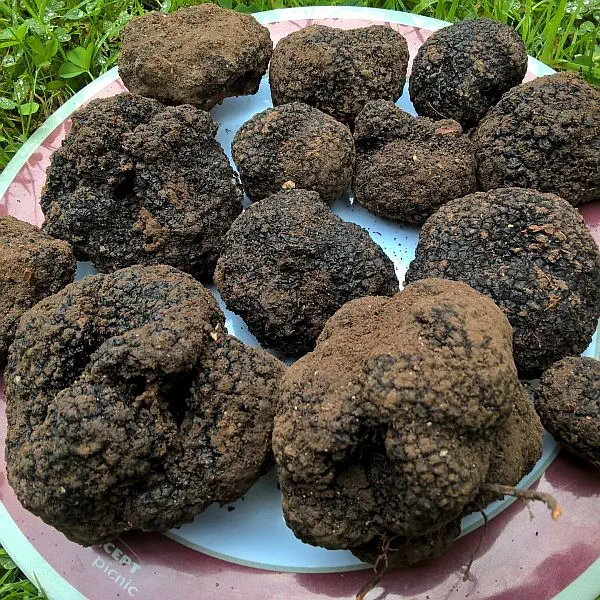You’ve found some truffles in your garden, you’re very excited, you’ve ordered that new car you’ve always had your eye on….
We don’t want to put a downer on your discovery but people’s perceptions about truffles are sometimes based on newspaper articles. You might be surprised to learn that such articles can be full of inaccuracies, so perceptions can be wrong. Finding truffles in a garden in the UK is actually not that uncommon an occurrence. We can get 2 or 3 emails each week at times of the year reporting garden (or even school ground) truffle finds. They are usually made while digging beds or tidying up, such as clearing Ivy, though can be dug up and left behind by a range of animals including squirrels, badgers, deer or the family dog!
Often, especially early in the season in May and June, “accidental finds” are of unripe truffles with little flavour or aroma and are valueless. Even if found later in the year and of better quality, it can be hard to sell a truffle with pubs and restaurants these days wanting full traceability and paperwork for all ingredients and no longer doing “backdoor sales”. Sorry, we too rarely buy in truffles.
Here we will help you confirm whether you do or don’t have truffles, and give you pointers towards finding more, caring for and eating them.
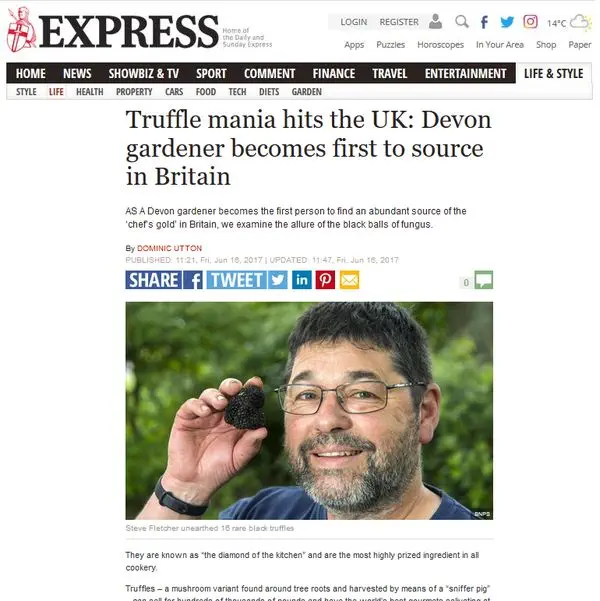
newspapers suggest. Such reports can be full of inaccuracies.
Are they truffles?
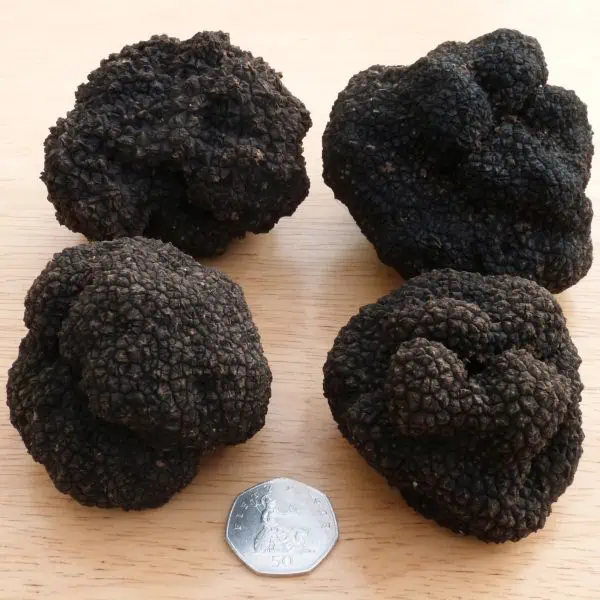
About 50% of the people who contact us when they have found what they think are truffles are mistaken. There are a good number of fungi including some that are at least partially underground that are not truffles or are species of truffle that are not eaten. Sometimes the find is not a fungus but a plant gall.
| Safety First Rule number one for foragers is you only eat something if you are 100% sure that you know what it is and that it is safe to eat. There are many other types of underground fungi other than truffles, and many are not safe to eat. This is a genuine extract from an email we received: Rather stupidly I was so convinced that it was the prized edible white truffle, I consumed some. I then suffered from bad diarrhoea about 4 hours after. Still feeling a bit nauseous this morning! Hopefully I have not consumed a very toxic lookalike!!! Do you think it is worth seeking medical attention (really not feeling that bad now, just mildly upset stomach no more diarrhoea either). “If in doubt, leave it out”. |
Truffles can vary in size from that of your thumbnail to that of your clenched fist or even larger! They are generally found in alkaline, free-draining soil such as over chalk or limestone and grow in association with (under or near) a range of deciduous trees including beech, oak, hazel, holly, lime, hornbeam, birch and cherry.
- Was it buried in soil either fully or to a greater extent?
- Is the skin black in colour with pronounced pyramid-shaped warts?
- When cut in half, does it have white marbling on a pale cream to brown background (see below photos)?
If you can answer “yes” to all of the above, please check against the photos on this page. They show summer or autumn truffles found in the UK. Their seasons are May to August and September to January or February respectively. If your find looks like them, you may have found truffles, but as below, we are happy to confirm this.
If you do not have a “yes” for all of the above, please look at “truffle look-alikes” – things that people regularly confuse with truffles.
| White Truffles A small proportion of the finds reported to us are of white truffles. The finders are very excited with some thinking they have found THE white truffle – The Italian white truffle (Tuber magnatum) – the most valuable type of truffle. Unfortunately, that species does NOT grow in Britain. What they may have found is one of about nine species of white truffle that are found in this country. With the exception of the whitish truffle (T. borchii), they are not eaten and are valueless. You can read more about these species in the groups listed here. It may also be a white truffle “look-alike – check this page. |

We produce several newsletters per year with truffle news, events, goods, services and offers.
ID Confirmation
You should only eat any fungi, including truffles, if you are 100% certain that you know what they are and that they are safe to eat. We are happy to confirm your identification. If it matches the description / photos of truffles and was at least partially underground please email with:
- Some close-up photos with a common object (e.g. a coin) for scale. Please include a photo with a cross-section of one of your truffles.
- Your postcode.
- Details of the nearest trees (species / approximate age or size).
- When you found it/them.
- The number you have found.
- The total weight.
With your postcode, we will add your record to our database of garden finds. It will help us look at the soil types and geology in your area to help our understanding of their preferences and improve our predictive models. We will not share your postcode (or steal your truffles!), but may publish a map of all garden finds at a very general (UK) scale, where exact locations cannot be determined.
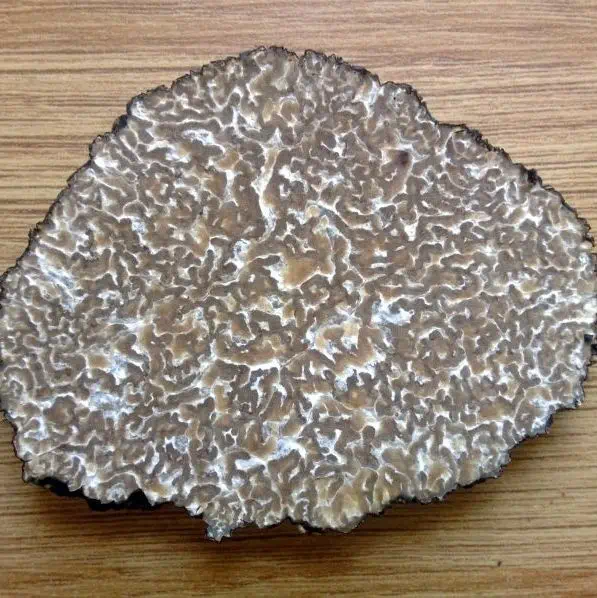
Unripe Truffles
If you have found a summer truffle in May or June, it is likely that it is unripe. An unripe truffle, when cut open, has flesh that is pale, almost white. They darken as they get riper. If unripe, it will also only have a hint of truffle smell to it and the taste will be quite bland. While a few companies do sell them this early, they often disappoint customers. The English Truffle Company generally waits until later in the year, starting harvesting in August or September.
Unfortunately, once they are out of the ground they won’t ripen. You can’t put them on a windowsill like a tomato. When excavated, the clock is ticking, and they will eventually rot or dry out and lose all of their smell. If unripe, you could cut them up into small pieces and re-bury them with a hope of creating more truffles in another five years or so.
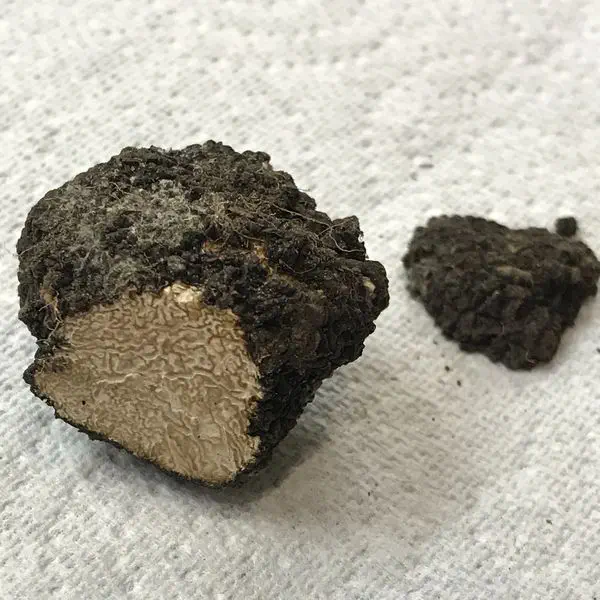
Useful Information
More Truffles in Your Garden
If you look after the area of your garden where you found your truffles, you may well get more, both in this year and future ones. Unlike, say grapes, you don’t harvest all truffles in one go, you hopefully keep getting ripe ones every few weeks in the season (c. July – c. January). Do NOT dig the entire area over like you were harvesting potatoes. You will irreparably damage the main body of the truffle fungus, the mycelium – microscopic threads throughout the soil. See looking for truffles for more information.
Caring for Truffles
For guidance to keep your truffles in the best condition, see our how to care for truffles page.
Cooking with Truffles
See our cooking pages for general guidance and recipes. I’m a fan of truffled scrambled eggs and also truffle butter. Do NOT make truffle oil.
Selling Them
“It is harder to sell a truffle than find one” is what I hear from a good number of people. These days pubs and restaurants want all the paper work and traceability of their ingredients so rarely do “back door sales”. We generally don’t buy in truffles, so suggest, if you are certain of their identification, that you enjoy them yourself or give them to friends. Truffle butter is the best way of preserving them and can be frozen.
